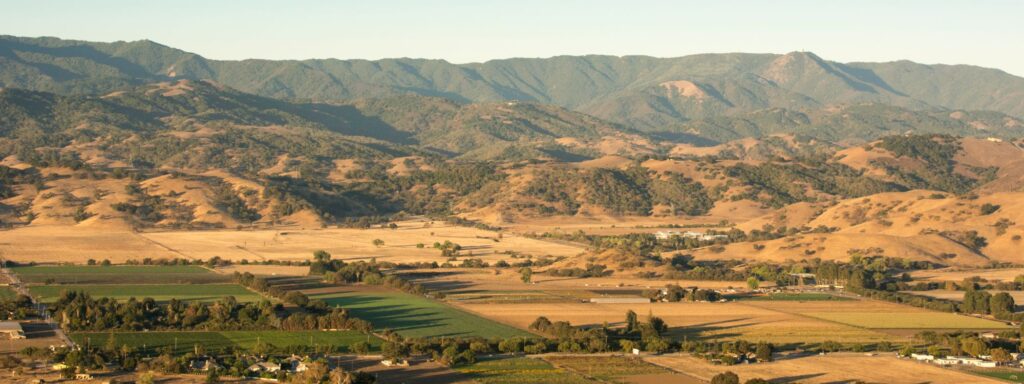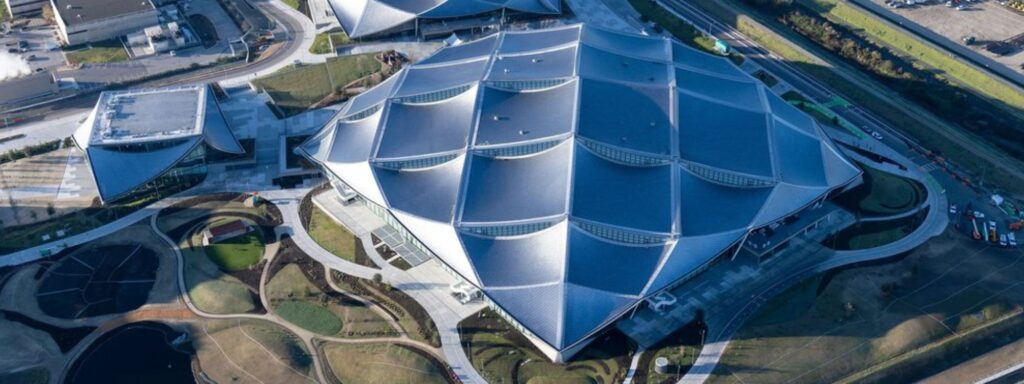In August 2022, the US Drought Monitor reported that almost 30% of the country remains in severe drought conditions. California and the San Francisco Bay Area have been burdened by a multiple-year drought and intense heat waves and wildfires. In order to sustain our growing needs, we need to employ smart water management models. Conserving our scarce water resources and investing in nature-based solutions are key to creating healthy and drought-resilient communities.
For more on nature-based solutions, check out the Resilience Playbook.
Earlier this year, we collaborated with SPUR and the Pacific Institute on a series of case studies in water management for California’s changing climate. “Watershed Moments” offers insights and recommendations to help our region manage our precious water resources during this time of unprecedented drought and worsening climate impacts. Check out the summaries of two case studies that Greenbelt Alliance authored to showcase two leading examples of better water management that can teach valuable lessons in a time of severe drought.
Coyote Valley in Santa Clara County

Coyote Valley, in southern Santa Clara County, is a key agricultural region. It is home to the largest remaining undeveloped recharge area for the groundwater basin that serves Silicon Valley. Additionally, its 2,500 acres of floodplains slow and retain floodwater, protecting urban communities in the City of San José. It’s also teeming with wildlife, serving as a corridor and watercourse for thirsty bobcats, coyotes, foxes, and many other animals.
The valley provides an important buffer between San José’s urban areas and its agricultural land. This helps keep our air clean and our food supply secure. It’s also a beautiful place where people can come to enjoy nature close to home. Most importantly, its water resources are essential for the health of our region.
This case study tells the story that makes Coyote Valley a great template for water-smart planning and the use of open space conservation to safeguard our most vital and vulnerable water supplies. From the threat of urban growth to the conservation of drinking water supplies, Coyote Valley is a successful model for water-smart planning. The study concludes with strategies to safeguard our groundwater resources. It also breaks down a number of local actors who have the authority to advance these strategies.
Google’s Bay View Campus in Santa Clara County

and onsite reuse. An aerial photo of Google’s Bay View campus from Google.com
Water shortages are a serious problem in California and climate impacts will only exacerbate existing concerns over this finite, yet essential resource. Corporate projects account for a large portion of urban water demand. Together, businesses and other non-residential spaces use 40% of our water supplies in the Bay Area. In order to reduce the strain on our limited resources, companies need to develop creative water efficiency and reuse solutions. By doing so, they can also set the bar for future water-wise projects in California and beyond.
A good example of this is Google’s Bay View Campus. Following a relatively new approach, Google makes use of demand reduction, rainwater capture, and wastewater treatment to achieve net-positive water development. This means that the Bay View building will be able to generate more non-potable water than it uses and only use municipal water for potable purposes. This could reduce demand from local ecosystems such as rivers, streams, and groundwater. Google has also estimated that the Bay View campus will save over 1 million gallons of potable water per year compared to a traditional office building.
While this is great news, there are a number of obstacles that property owners who may want to adopt a similar approach may face. This case study not only breaks down the three main barriers to increasing commercial water-use efficiency and reuse but also uncovers two timely strategies along with the main stakeholders behind them. The question of whether water reuse should be managed by private owners or municipal agencies remains an ongoing debate. However, real-life examples like the Google Bay View Campus can help us understand these systems, the different stakeholders involved, and provide some of the solutions we need to better manage our water resources and improve our communities’ resilience to drought.
⇒ Read the full “Water-Wise Development on a Corporate Campus” case study here.
More on Water-resources Management
Check out our 30-min conversation with Dr. Newsha K. Ajami, Director of the Urban Water Policy Program at Stanford Woods Institute for the Environment, to learn how drought affects our lives. We also discuss how nature-based solutions prepare us for the impacts our changing climate has on our water availability 👇





